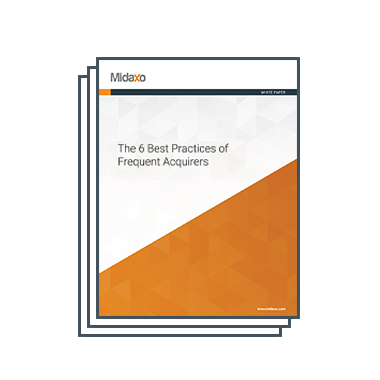Serviced offices are no longer the preserve of start-ups. Personal banking can be managed via a smartphone from the beach. The weekly grocery shop – or even an entire Christmas list – can be purchased from the comfort of home. Your favorite meal can be delivered from your favorite city restaurant with the swipe of a few buttons. And to make things that little bit sweeter, all these purchases can be made while streaming a movie from the sofa (given the obsolescence of brick and mortar DVD rental stores). The common link? A seismic shift in the way companies utilize real estate in their everyday operations.
As we witness a number of forces disrupting the way we work and play, companies across the world are struggling to ride a tidal wave of change and face a multitude of challenges. One of the most significant challenges centers around maintaining an efficient and optimized real estate footprint. Indeed, management of real estate is becoming of increasing strategic importance – while at the same time presenting a number of new risk factors. In today’s world, companies need – more than ever – a comprehensive real estate strategy that aligns with their overall corporate strategy. Accordingly, real estate rationalization is becoming increasingly relevant.
The Drivers of Real Estate Rationalization
A real estate rationalization program should be a key strategic consideration for companies worldwide – it should be considered on a regular basis as part of on-going operating model reviews and as part of any strategy workshops. There’s a multitude of drivers behind why a company might need to consider rationalization of their real estate portfolio – some of which include:
- Untangling a complex, burdensome and inefficient real estate portfolio – perhaps a legacy of years (or decades) of M&A activity. A string of mergers, acquisitions, divestments and restructuring programs, has left many organizations with overly complex, inefficient, and geographically sub-optimal real estate portfolios;
- Untangling a real estate footprint before a divestment/other sell-side activity;
- Exiting a sub-optimal region/geography;
- Freeing up capital and redeploy elsewhere – e.g. invest in early-stage venture targets, fund R&D for a new product line or pay down debt;
- Reducing a fixed cost base to drive cost savings and increase profits (or move towards profitability);
- General sub-optimal utilization of real estate – i.e. how many offices have you walked into and seen half of the desks empty?
- Reducing administrative burdens – such as renegotiating a lease every X years, being at the mercy of landlords with annual rental hikes and rates increases and carrying a significant dilapidations provision on the balance sheet;
- Changes to workplace design – the working environment has transformed significantly over the years. Thankfully, there has been a widespread shift away from so-called cube-farms, to open plan working and more recently, office configurations dedicated to informal spaces such as large kitchens with break-out areas where some of the most creative ideas are born;
- Changes in consumption habits – for instance, a shift to online buying, millennials favoring “experiences” over unnecessary consumer goods and showing a preference for “independents” over large retail malls;
- Globalization bringing opportunities for offshoring and for companies to focus on geographies that can offer a comparative advantage in part of the supply chain.
Change is needed…but it’s not easy
Many traditional companies are burdened with significant ongoing operating expenses and capital costs with regards to owned and/or leased real estate – which was once pivotal to support day-to-day operations. For such companies, headquarters, regional offices and stores, might span hundreds/thousands/millions of square feet, contributing to a significant fixed cost base and the potential for suboptimal utilization of real estate. These companies are now at the mercy of monumental changes in market dynamics – whereby if they don’t embrace change, not only will they risk not being current, they may cease to exist. The problem, however, is that many are subject to long-term financial commitments underpinning their real estate footprint. These commitments are often based on legacy business models that are quickly dying out (the recent wave of the department store and travel agency closures in the UK is a case in point). However, with these financial commitments possibly spanning 5-20+ years, and typically including severe penalties for early termination, optimization of real estate can be a difficult task from the outset. Accordingly, any company faced with this situation would be wise to prepare well ahead for when they are able to renegotiate/optimize a lease or walk away without being penalized.
Tearing up the real estate playbook
Taking the US as a case study, it’s evident that many companies occupy much more real estate than is required. A recent McKinsey report outlines that on a per capita basis, retail space in the US is 15 to 20 times that of other major developed markets. For most companies, a legacy business model centered around a vast real estate footprint cannot – and will not – continue. Furthermore, as footfall at traditional retail outlets such as large malls declines, margins are also being squeezed. The result is a wide-spread rationalization program across the US for many companies as they struggle to justify retaining their vast real estate footprint.
In the US, retailers closed a record 102 million square feet of store space in 2017 – surpassing this in 2018 by closing another 155 million square feet. The overall prediction for store closures in the US by the end of 2019 is in excess of 9,300. And these closures are not the preserve of small family-owned stores in backwater towns. We’re talking the likes of Walmart (17 closures), Macy’s (9 closures), CVS Health (68 closures), GAP (230 closures), Walgreens (200 closures) and Abercrombie & Fitch (40 closures). Collectively, these six brands are expected to have closed well in excess of 500 locations by the end of 2019.
Retail banking is another sector being hit by various market forces conspiring to reduce real estate footprints. Smartphones/tablets/computers are the new normal for many when it comes to banking, while exponential growth of – and advances in – contactless payments has resulted in significantly reduced demand for cash handling services and thus, bank branches. At the extreme end of the spectrum, an increasing number of so-called “challenger banks” don’t have any branches (admittedly, some purely target millennials, but it proves that banking is possible without bricks and mortar). In the UK, a third of UK bank branches (over 3000) have closed since 2015. Overall, the UK branch network has reduced from 9,803 to 6,549 in four and a half years. Of course, closures risk preventing many customers that favor the traditional way of banking from not being able to access vital services and the ability to access cash – so it’s a delicate balancing act for any bank in the eye of the storm.
Online is key but in-store is king
Consumers have the power to purchase more-or-less anything they want from a global marketplace via their tablets/smartphones/computers. Furthermore, they can seek out a second, third, or hundredth opinion from verified customers via dedicated review pages. In terms of delivery, next day is fast becoming the de-facto – while when it comes to content (music/films) instantaneous delivery is achieved via streaming or rapid download. The same is true for many restaurants – with growth in on-demand eating apps, restaurant food is available at home and thus fewer tables are required in-house. Of course, the drivers of rationalization are multifaceted. Taking the restaurants as an example, many have struggled from overcapacity in the casual dining market, weak consumer spending and surging costs – with restaurants, therefore, closing for a number of connected reasons.
Not only do many retailers have too much space via a real estate footprint that’s out of equilibrium with footfall, but they also cannot afford the costs associated with maintaining a real estate empire. For instance, a reduction of in-store sales and rising fixed costs see profit margins being squeezed. Put simply, many companies are struggling to endure the rapid shift to e-commerce and related market forces such as the exponential growth of direct-to-consumer brands cutting out the need for physical locations. And there no signs of online spending abating anytime soon:
- Estimates predict consumers will make 95% of purchases online by 2040 (Nasdaq);
- Experts expect global e-commerce sales to double between 2018 and 2023, breaking the $6 trillion mark (Statista);
- 72% of e-commerce will take place on a mobile device by 2021 (Statista).
That said, the majority of consumer spending still occurs off-line, within four walls – or across a combination of online and offline (omnichannel). In the US, for instance, physical stores account for around 90% of all retail sales. Four years from now, by most estimates, that number is still likely to be over 80%. It’s safe to say that physical stores are not going to become a distant memory. Consumers still like to walk into a store and browse across a range of products. Indeed, KPMG reports that the top reason consumers prefer to shop in-store versus online is to see, feel and experience a product in person. This is an experience that online cannot – and will not – ever be able to replace.
Perhaps the most significant change when it comes to the preservation of physical stores is that nowadays they might serve a number of purposes – for instance, a showroom for products and services (just think of Apple with their array of latest tech and “geniuses” being on-hand), a fulfillment center for online orders, or a destination for those looking for ideas and inspiration for the home (IKEA). On this basis, it’s conceivable for a store to have weak in-store sales while being a strong contributor to overall sales and performance. For any company considering rationalization, the difficulty lies in ascertaining how much in-store contributes towards online purchases. For instance, if out-dated metrics and in-store economics underpin the basis of a rationalization program a company could easily be overlooking the positive contribution a store (or network of stores) has to the ultimate purchasing channel – online.
The end of the office as we know it…?
Thankfully, for many employees the traditional notion of the office environment is disappearing – think soulless cube farms and a lack of natural light. The office itself, is not, however, disappearing. In recent years, Mars invested $29 million in a new facility, Whirlpool $85 million, Apple around $5 billion on their “campus” and Samsung $300 million. What we’re witnessing is a shift in the way physical office space is being used. Indeed, today’s employees are demanding much more from their work environment – flexibility in where they actually work across the day (desk/break-out area, from a bean-bag etc.) and what facilities they expect (gym, catered lunch, relaxation rooms, the type of desk – bar-style, mobile, standing – and even dog friendly, etc.).
The office spaces of today are being built because they are becoming the new normal and are key to retaining and attracting talent. Similar to the way in which retailers are using stores as much more than a place to make a purchase, some workplaces are almost becoming experiences (i.e. work across multiple locations, have a coffee with colleagues in a chain café and visit the gym – all under one roof).
Any savvy company with its finger on the pulse of the labor market will fully understand that the work environment is a key consideration for those job-hunting. In fact, some job seekers will even trade some annual salary for a better working environment such is the impact on well-being. Related to this is the changing expectations of workers in terms of where they work. 43% of Americans now spend at least some time working from home. As flexible working becomes more embedded in everyday working life, many companies are finding that they don’t need to allocate a desk for every employee, every day of the week and thus, can rationalize some of their office space. Furthermore, technology is changing the way in which we work. More efficient communication methods – and an abundance of them – means workers can communicate across continents in real-time and work collaboratively even though thousands of miles apart. Technology is also changing the way in which offices can be configured – think smaller computers and storage via the Cloud rather than rooms/entire floors full of dusty folders and filing cabinets.
Another significant development is the relatively recent growth in the serviced office sector – a trend set to continue. Althoxzugh serviced offices have traditionally been the preserve of start-ups (think bean bags and ping pong tables) a number of major industry players have recently moved into service office space. A 2017 study reports that 44 per cent of large corporations are currently using a flexible serviced office solution. Also, in 2017, IBM leased an entire WeWork space in Greenwich Village, New York. A year before, Microsoft moved 30 per cent of its sales department into WeWork spaces. Amazon’s Boston office and Airbnb’s Berlin office are also located in WeWork properties. A serviced office might appeal as a way to consolidate a number of small offices across a city. Or perhaps a company is looking for more of a pay-as-you-go approach to paying for office space. Either way, serviced offices enable companies to significantly reduce their real estate footprint, capital expenditure and walk away from long-term lease contracts which limit the flexibility of operations.
How to Approach Rationalization of Your Real Estate Footprint
Many companies have significant capital tied up in real estate and are subject to long-term leases. This can prompt questions around the alignment and suitability of a real estate footprint in context to the overall corporate strategy. As part of a real estate rationalization project, the significance of real estate and associated priorities for supporting operations, administration and other areas of business operations, should be directly linked to the corporate strategy. By taking this approach and planning for when the opportunity to rationalize arises, companies can position themselves to realize significant cost and efficiency savings via a real estate rationalization program.
Any number of constructs can be used to map an organization’s key strategic drivers and outcomes when it comes to real estate rationalization – some of which are outlined below for consideration.
Location Strategy – Service Delivery Model
- A company’s service delivery model will have a significant impact on the location strategy which is pursued. For example, are services to be provided onsite? In the country? Nearshore? Offshore?
Workplace Strategy – Workplace Design Principles
- Qualitative and quantitative design principles need to be considered when evaluating strategic real estate drivers. Qualitative drivers included elements such as employee working styles, sustainability considerations, integration of workplace technology, etc.
- Quantitative drivers include metrics such as planned square feet per employee, planned levels of revenues/costs per employee and allocation of those revenue/costs per location, market-based cost/square feet, etc.
Mobility
- Technology has allowed for more advanced mobility of workforces. Companies, therefore, need to evaluate both the current level of acceptance and the planned future level of acceptance of advanced, mobility-enabled workplace design trends and the impact these will have on real estate capacity requirements.
Financial Considerations
Several financial considerations should be considered when determining the strategy for choosing locations. These include:
- Implementation Time – the time required for implementing a real estate transaction and the associated financial impact of that timing will be a major consideration. Is there a requirement to execute a transaction quickly? Or can more time be taken to evaluate a multitude of options and engage in a strategic negotiation process?
- The complexity of the Specific Market – the complexity of a specific real estate market will drive location consideration. Included here are factors such as real estate availability, market transparency, levels of corruption, etc.
- Macro-Financial Conditions – factors such as the prevailing interest rates, availability of attractive financial terms for lease/purchase, levels of inflation, etc. will set the context for determining which real estate strategies best fit a given marketplace.
Take-Aways
- A multitude of market forces, legacy business models and changes in consumer habits mean companies have to adapt to stay relevant. For many, this means rationalization of real estate is – or will be – a key consideration;
- The way many retailers are using their store space is changing towards offering an experience far beyond the transaction;
- E-commence and online purchasing are not eating the world. Stores still do – and will continue to – play a significant role in the future;
- The end of the office is not upon us. Rather, we are just seeing a change in how offices are used and how they can be conducive to increased productivity and greater wellbeing.





